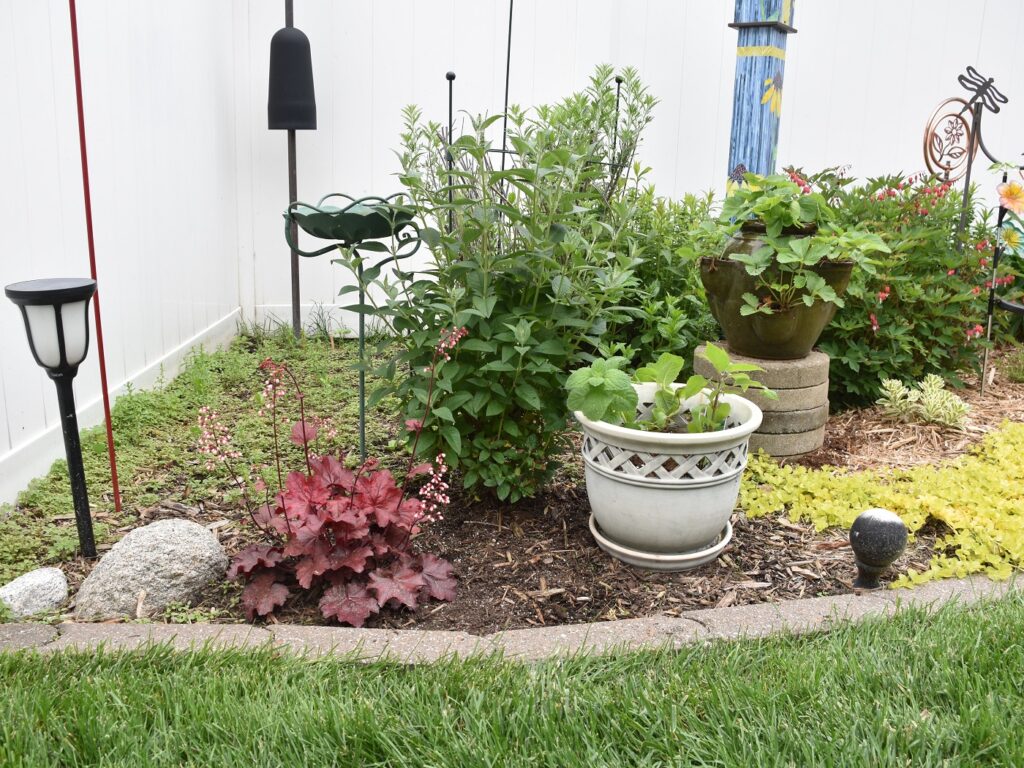Why do I want to talk about August garden roundup tips? Why is it so important???
Thank you for reading this post, don't forget to subscribe!But first, on a personal note…
If there is a time when gardening is most important, it’s August, and making an August garden roundup tips checklist is key. August is the time when we gear up for fall. Now is the time to get outside for a bit and do some cleaning, pruning, and planning for some fall planting…
“A garden is a grand teacher. It teaches patience and careful watchfulness; it teaches industry and thrift; above all it teaches entire trust.”. — Gertrude Jekyll
The following article comes straight from The Spruce contains everything you need to know so I am just quoting their article. It has all the deets on the best of 2021 August Garden Roundup Tips!
So check out the All Regions section for general tips and then jump down to your region for more specific tips for your community.
“All Regions, General August Garden Roundup Tips
- Pick your spots to work outside. Anticipate heat waves and humidity, and get your work done on the days most pleasant for working outdoors.
- No matter where you live, you will probably need to water the garden some in August.
- Be on high alert for insect pests. These include but are not limited to thrips, tomato fruitworm, tomato hornworm, spider mites, chinch bugs, scale, snails, and slugs.
- The heat and humidity of mid-summer bring with them plant diseases. Inspect your plants for any diseased foliage now, remove it, and dispose of it properly (do not put it in the compost pile). Make sure to disinfect your tools, like pruners, between each plant to avoid spreading disease to healthy plants.
- This is still prime time for heat-resistant flowers such as coleus, hibiscus, Melampodium, Pentas, plumbago, moss rose, and zinnias.
- Keep up with your harvesting. Zucchini produce like crazy and get tough if left on the vine too long; share the excess with neighbors. Failure to harvest can also slow garden plants down.
Enjoying it so far? Subscribe and get more monthly home improvement and gardening tips and worksheets!
The form you have selected does not exist.

August Garden Roundup Tips for specific regions
Mid-Atlantic August garden roundup tips
There will likely be extended heat waves in August in the Mid-Atlantic. Protect your investment in your plants: Keep them adequately watered.
- Keep an eye out for pests such as groundhogs and rabbits so that they do not get to your harvest before you do. If you find controlling these pests too difficult, consider growing groundhog-resistant plants and rabbit-resistant plants next year.
- Keep those bargain-basement annuals (such as red salvia) you bought in July watered and insect-free so that they will be ready for use in fall plantings. They looked bad back when you bought them because they were root-bound and needed a trim, but you put the work in to revive them; protect the investment of time you put into them.
- Continue to mulch to cut down on watering bills and to keep weeds at bay.
- Ensure that your automatic irrigation system is working properly.
- Harvest herbs both for immediate use and for drying.
- Order spring bulbs.
There will be scorching days in August in the Midwest and even extended heat waves. Protect your investment in your plants: Keep them adequately watered.
- Harvest vegetables and berries regularly.
- Avoid pruning shrubs after mid-August. You will only be inviting new growth that will fail to harden off in time for cold weather and may become damaged.
- Continue to mulch to cut down on watering bills and to keep weeds at bay.
- Those bargain-basement annuals that you bought back in July should have returned to health by now. Keep them watered and insect-free so that, whenever the worst of summer’s heat seems to have subsided, they will be ready for use in fall plantings.
The Northeast sees hot, humid weather at the start of August. The second half of the month is unpredictable; sometimes it brings rainy periods.
- Keep the annuals that you bought on the cheap in July (for use in fall plantings) properly watered and insect-free. You would not want to let them die now and lose the investment of time and energy you put into them.
- Harvest vegetables and berries regularly so that the plants keep producing.
- Continue to mulch to cut down on watering bills and keep weeds at bay.
- Avoid pruning shrubs after mid-August.
Pacific Northwest
As usual, the Pacific Northwest offers moderate temperatures in August. In Seattle, for example, the average high is 76 F and the average low 57 F; expect five days of rain.
- Out with the old, in with the new: As the vegetables of early summer peter out, replace them with fall crops. This is the time to put in “cole crops,” for example. These include broccoli, cabbage, Brussels sprouts, kale, and cauliflower. August is also a good time to plant leafy vegetables like lettuce and spinach.
- Fertilize summer-flowering bulbs such as dahlias, but stop fertilizing perennials, shrubs, and trees.
- Water shrubs each week during periods when it does not rain much. Bud-set and berry-production alike are adversely affected by drought.
- Plant autumn crocus corms (Colchicum).

Pacific Coast
August is sunny and dry in Northern California. The average high in San Francisco, for example, is 68 degrees F, the average low 57; you will get virtually no rain. Southern California is predictably warmer, with an average high of 84 degrees F, and an average low of 64 degrees F.
In Northern California:
- Plant garlic for a spring crop.
- Clean up your rose garden through deadheading and pruning.
In Southern California:
- Continue to plan your fall garden.
- Continue to mulch for weed prevention and water retention.
- Water plants regularly.
- After the harvest, fertilize your citrus trees.
Southwest
In the high desert, August is hot. In Santa Fe, New Mexico, for example, expect an average high of 83 degrees F and an average low of 53 degrees F; you will get about 10 days of rain. If Santa Fe is hot, then Phoenix, Arizona, is blistering, as summer is peaking. You will have an average high of 104 degrees F, an average low 82 degrees F, and hardly any rain.
- Ensure that your automatic irrigation system is working properly.
- Practice grasshopper control. There are organic insect soaps you can use to control these pests. Or, to save money but still, stay natural, try a homemade concoction such as one part crushed garlic to every three parts water to make a spray you can apply wherever grasshoppers are a problem.
- To prevent sunburn on young perennials and succulents, furnish them with some shade. This is easiest to do when you are growing them in containers (so that you can move the containers around as needed).
Southeast
It is quite hot in August in the Southeast. Atlanta, for example, has an average high of 88 degrees F and an average low of 71; this city will get 10 rainy days in August.
- Watch for fungal disease, which is promoted by so much rain.
- Continue to apply mulch as needed for moisture retention and weed suppression.
- Start planning the fall vegetable garden.
- After the harvest, fertilize your citrus trees.”
I’m excited to share thsi article and checklist with you all and to my subscribers. Feel free to use this compact specific list to get everything done in your garden in late summer. Subscribe to more tips and monthly home improvement and organizing checklists:
The form you have selected does not exist.
For more of the same reading, check out my garden blog section The Green Thumb!
It has lots of simple ways to get your indoor and outdoor gardens thriving in no time. Until next time!
“Life begins the day you start a garden.”. – Chinese proverb.



